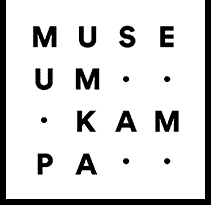The versatile artist, pedagogue and curator Eduard Ovčáček belongs to the generation of artists who, in the 1960s, re-established the severed connections with pre-war art and developed the legacy of modernism in an innovative manner. Ovčáček’s work, which includes a wide range of artistic approaches – graphic art, burnt collages, painting, sculpture, concrete and visual poetry, photography, the art of action and installation – can be described, without hesitation, as multimedia. If we look today at the artist’s creative path from the perspective of a slowly enclosing work, we will see two intertwined thematic areas – interest in the human figure and interest in the visual and content values of writing, numbers and symbols.
This intimate exhibition in Museum Kampa is dedicated to works with a grapheme motif (letters, emblems, numbers, and punctuation marks), i.e. so-called lettrist works, which began to form in Ovčáček’s studio at the same time as visual poetry during the first half of the 1960s. The first examples of the use of letters in his work appear as early as 1962 as part of materially felt oeuvres Art Informel. In the following years, graphemes take on the role of the primary bearer of artistic communication, and in them the artist still verifies the possibilities of abstracting and generalizing the initial form and the principle of repetitive multiplication of the shape in the area.
In 1964, Ovčáček began teaching at the Faculty of Education of Palacký University in Olomouc, where he obtained sets of metal stamps of letters and numbers. It happened just before the time when the topic of the written sign was ready to be developed in a concentrated manner. In the hot state, he burned metal graphemes into the surface of wooden boards, objects, paper sheets or pressed them into the layer of hand-made pulp as a relief imprint. Ovčáček presented his first lettrist works together with Ladislav Novák and Miloš Urbásek in 1965 in Ostrava at the now legendary exhibition Image and Letter. As Ludvík Ševeček mentions, in these lettristic oriented works, for Ovčáček “it has never been and is not about working only with the visual values of writing, numbers or other traditional cultural symbols, but also, and above all, about their spiritual thematization.”
Clusters of burnt symbols, numbers and letters typical of Ovčáček’s oldest burnt-out collages, plates and totems gave way in the mid-1960s to the growing effort for increasingly emphatic rationality and moderation in the configuration of the pictorial surface. Therefore, it is not surprising that after the establishment of the Club of Concretists in 1967, which had a widely open platform, developing ideas of constructive tendencies, minimalism and elementary language of geometry that Eduard Ovčáček became one of its more important members. The Club held its first domestic exhibition already in 1968 in Jihlava. In the club review Arci 3.14 Ovčáček characterized his inner artistic program, which remained valid throughout his creative career: “The repertoire of geometric, stereometric shapes, colour, light, verbal material letter, number, pictogram offers endless possibilities of art, constructive, combinational, permutational, optical, phonetic, kinetic, etc.”
Although this exhibition of Ovčáček’s lettrist work presents only two artistic media – burnt collages and wooden objects – its emphasis on the dialogue of gestural (Vertical Object, 1964; Collage 15, 1965) and rational approach (Tower, 1968; Possibilities of Twelve Circles, 1977) leads the visitor to the idea that the grapheme for Ovčáček is not just a visual element, but a deeper symbol referring to the existence of the human and to the mutual polarity of values upon which our world is based.
Ilona Víchová, curator of the exhibition

